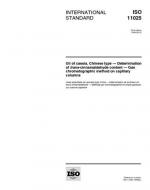|
This section contains 595 words (approx. 2 pages at 300 words per page) |

|
Overview
Cinnamaldehyde (sin-uh-MAL-duh-hide) is also known as cinnamic aldehyde; 3-phenyl-2-propenal; cinnamyl aldehyde; phenylalacrolein; cinnamal; and trans-cinnamaldehyde. It is a yellowish oily, liquid with a sweet taste and a cinnamish odor responsible for the characteristic taste and odor of cinnamon spice. It occurs naturally in the bark of the cinnamon tree, Cinnamomum zeylanicum, which is native to Sri Lanka and India, and has been cultivated in other parts of the world, such as Brazil, Jamaica, and Mauritius. Cinnamaldehyde is also found in other members of the the Cinnamomum> species, including cassia and camphor.
The molecular formula for cinnamaldehyde was determined in 1834 by the French chemists Jean Baptiste André Dumas (1800–1884) and Eugène Melchior Péligot (1811–1890), although its structural formula was deciphered only in 1866 by the German chemist Emil Erlenmeyer (1825–1909).
Key Facts
Other Names:
See Overview.
Formula:
C6H5CH=CHCHO
Elements:
Carbon, hydrogen, oxygen
Compound Type:
Aromatic aldehyde...
|
This section contains 595 words (approx. 2 pages at 300 words per page) |

|


